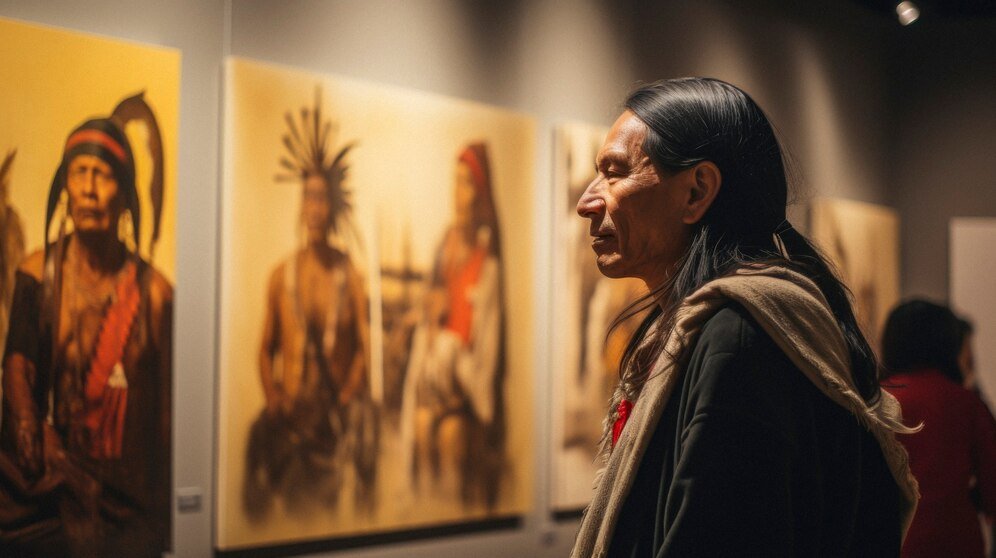Contenido
Art has been our species’ storyteller for millennia, capturing humanity’s essence, its struggles, dreams, and triumphs. Among all its forms, Ancient Artz offers a profound connection to our shared past. It transcends time, whispering secrets of civilizations long gone while resonating with our present. What makes ancient art so impactful? And why do its beauty and stories still hold sway over modern creativity, culture, and identity?
Prepare to be captivated. This is a rich exploration of the mesmerizing legacy of ancient art—its remarkable aesthetics, its illuminating insights into early societies, and the ways it continues to shape our lives today.
Ancient Artz: A Window to the Past
When you gaze at an ancient fresco or intricately carved stone, you’re not just admiring a beautiful object—you’re entering a dialogue across millennia, hearing the collective voice of civilizations like the Egyptians, Greeks, Mayans, or Mesopotamians.
What is Ancient Artz?
Ancient Artz broadly refers to the works created by early human societies, spanning stone carvings, pottery, sculptures, murals, and architecture. Often infused with spiritual, cultural, or functional purposes, these artworks formed the essential framework of human expression.
For instance, the majestic Great Pyramids of Giza are not just architectural feats—they embody profound teachings of geometry, engineering, and the Egyptians’ spiritual connection to the afterlife.
Similarly, the Lascaux cave paintings in France, believed to be around 17,000 years old, transport us back to our Ice Age ancestors. These vivid depictions of animals give us rare glimpses into early survival, myths, and environmental awareness.
A Universal Language
The beauty of ancient art lies in its universality. Even across vast distances and varying cultures, recurring artistic motifs emerge—from fertility figures like the Venus of Willendorf to geometric patterns in textiles. These shared themes remind us of our collective humanity, a unifying thread that weaves through time.
The Beauty of Ancient Techniques
To fully appreciate ancient art, one must marvel at the sheer ingenuity behind its creation. With limited tools and resources, early artists pushed the boundaries of innovation.
Mastery in Materials
Ancient artisans worked with what they had around them—stone, clay, metals, pigments, and natural fibers—and crafted astonishing works of art. The Greek mastery of marble, for example, gave rise to breathtaking sculptures such as the Venus de Milo. Its flowing curves and soft, polished features, carved from hard stone, have enthralled millions for centuries.
Architectural Grandeur
The awe-inspiring grandeur of ancient architecture still dominates global skylines. Think of Rome’s Colosseum, the towering ziggurats of Mesopotamia, or India’s intricate temple carvings. These structures were not only marvels of aesthetic design but also engineering triumphs.
Symbolism and Detail
Ancient artworks brim with symbolism, each detail holding significant meaning. Take, for instance, the vivid mosaics of Byzantium. More than just decorative pieces, they served as spiritual portals, their intricate tiles crafted to dazzle in candlelight inside darkened churches.
The Lasting Influence of Ancient Art
While ancient civilizations have long receded into history, their artistic feats have profoundly shaped modern society.
Inspiring Modern Artists
Artists throughout history have looked to ancient models for guidance and inspiration. The Renaissance, widely regarded as one of the greatest bursts of creative achievement, was directly fueled by the rediscovery of Greco-Roman art. Michelangelo’s David and Botticelli’s Birth of Venus evoke a reverence for ancient ideals of form, grace, and storytelling.
Even today, revered creators draw aesthetically and conceptually from these past worlds. Fashion, film, and contemporary installations all echo ancient forms. Designers have woven Greek drapery into couture collections, while directors borrow narrative motifs from ancient myths.
Bridging Tradition and Globalization
Global institutions like the Louvre or the British Museum work tirelessly to preserve ancient artifacts and make them accessible. These treasures remind us of our interconnected histories, cultivating cultural curiosity in the midst of a rapidly globalizing world.
How Ancient Art Shapes Personal Identity Today
The watercolors of Klee or Picasso’s rare compositions may hang on our walls—but it’s likely ancient art still crowns your jewelry, lights up your bookshelf, or adorns your favorite piece of décor. Look more closely and you’ll likely see modern items inspired by intricately woven Peruvian textiles, Chinese porcelain patterns, or symbolic Aztec carvings.
Why does this enduring fascination exist? Because ancient art doesn’t simply live in the past; it engages us personally. It challenges our perceptions, evokes memories, and taps into something fundamental—a connection to the infinite continuum of human creativity.
How to Engage with Ancient Art and Its Legacy
Feeling inspired to explore the beauty of ancient art for yourself? Here are a few meaningful ways to engage with it in your daily life:
Visit Cultural Heritage Sites
Travel to locations steeped in artistic grandeur. Exploring the Acropolis in Athens or the temples of Angkor Wat in Cambodia provides an irreplaceable, first-hand experience of ancient mastery.
Support Preservation Efforts
Help safeguard ancient art for future generations. Donate to museums, heritage societies, or archaeological digs striving to uncover, maintain, and protect the beauty of the past.
Bring Ancient Techniques to Your Creativity
Try incorporating traditional craftsmanship into your artistic or home projects. Whether it’s pottery, weaving, or mosaic-making, ancient methods can bring fresh inspiration.
Study Their Symbolism
Dive deeper by learning about the symbolic meanings behind arts and relics of the past. Understanding the stories behind their creation enhances your appreciation and widens your perspective.
The Eternal Muse of Ancient Artz
At its core, Ancient Artz is more than relics and ruins. It’s a timeless window into the soul of human creativity—charting the story of who we were, and how we became who we are today.
Its beauty transcends its moment; its visual language needs no translation. Ancient art, even millennia later, invites us to pause, reflect, and connect. More importantly, it challenges us to ask—how will our creations shape future generations?
Where will the stories of the past lead you? The answer begins with exploration.
Cortesía de Miltrámites.net
